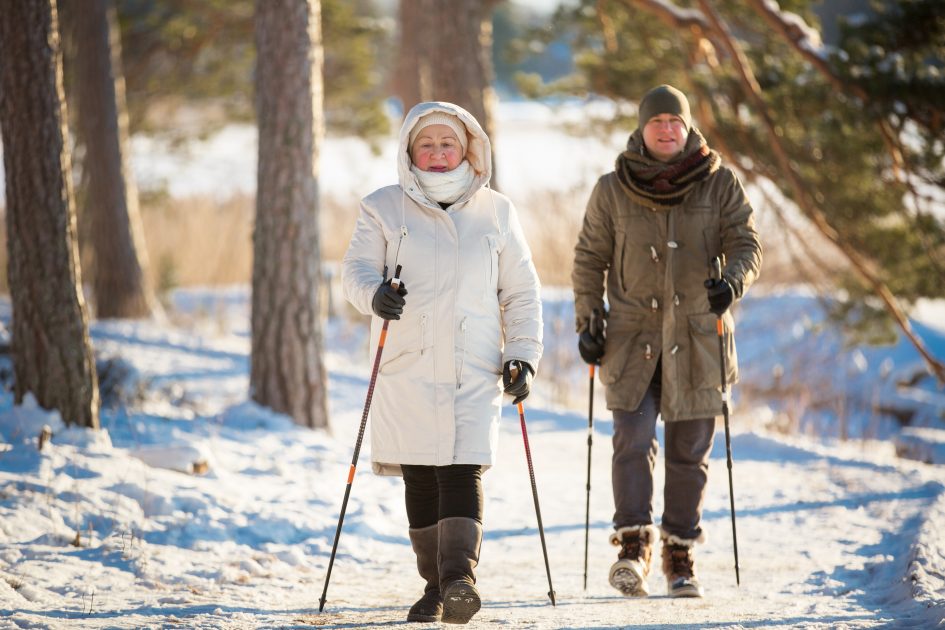Just because the temperature is colder doesn’t mean you need to take a break from physical activity. In fact, exercising during the winter can make you feel awake and invigorated. Whether you bundle up and venture outdoors or hit the gym, breaking a sweat is important for your total wellbeing, no matter the time of year. So, get on your feet and get moving with these tips from the American Heart Association!
BENEFITS OF STAYING ACTIVE
- Reduced risk for heart disease
- Extended life expectancy
- Better sleep
- Healthy weight
- More energy
- Enhanced mental wellbeing
- Improved mood
PICK YOUR ROUTINE
Moderate Exercise: 150 minutes each week (30 minutes per day x 5 days per week)
Moderate activity means your heart is beating faster and you’re starting to sweat. You can carry on a conversation, but you’ll be breathing heavier.
Try: walking at a brisk pace, ballroom dancing, ice skating, snowshoeing at a steady pace, pushing a stroller at a brisk pace or shoveling snow.
—OR—
Vigorous Exercise: 75 minutes each week (25 minutes per day x 3 days per week)
Vigorous activity feels more taxing. Your heart is beating much faster. You can carry on a conversation, but will find yourself pausing to take a breath.
Try: pushing a stroller uphill as a very brisk pace, running/jogging, snowshoeing at a brisk pace, racquetball, jumping rope, basketball or cross-country skiing.
BREAK UP YOUR WORKOUT
Whether you’re sticking to 150 minutes of moderate or 75 minutes of vigorous exercise per week, you can break up your workout into 10-minute sessions throughout your busy day. Here are some suggestions to try:
- Walking the dog or with a friend
- Walking at lunch – either outdoors, on a treadmill, or a nearby shopping center
- Walking around the block after dinner to help aid digestion and burn calories
- Housework (constant moving)
- Yardwork (e.g., shoveling snow)
http://www.heart.org/idc/groups/heart-public/@wcm/@fc/documents/downloadable/ucm_457235.pdf

